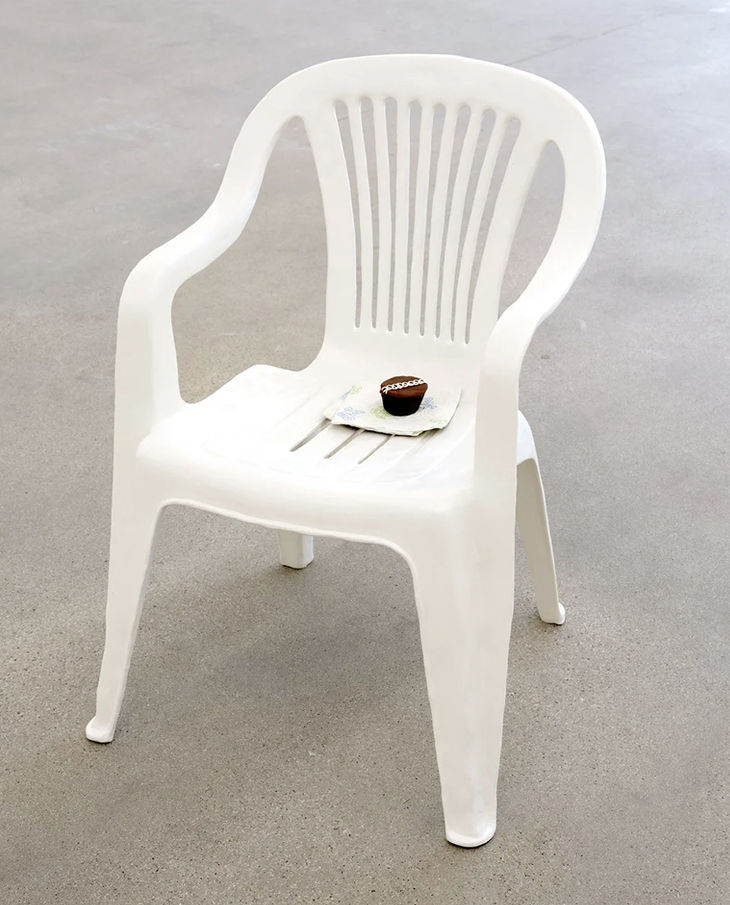Tamara Johnson, “Get Me, Don’t Get Me”
- Democracy Chain

- 3 days ago
- 3 min read
by John Zotos
Keijsers Koning Gallery, Dallas, Texas
Continuing through October 18, 2025

In 1960 Jasper Johns’ now famous and groundbreaking cast sculpture of two Ballantine Ale cans, “Painted Bronze” (1960), was hand-painted to resemble the original objects. Johns modified this homage to Duchamp’s readymade precedent by fabricating his own sculpture rather than merely finding a mass-produced object and adding a signature. In doing so he complicated Duchamp’s invention of conceptual art.
Tamara Johnson, also a curator and educator, updates and improves upon this process. In an artistic practice that deals with mimesis, Johnson has managed to expand her sculptural approach by reflecting on personal experiences, emotions, desires, and memories. Her work is equally a critique of the apparatus of mass production and its related economics of consumption and a demystification of the middle-class American nuclear family.

“Fruit Cocktail” is Johnson’s version of the canned fruit medley that was so popular several decades ago. She remembers it from her childhood as perhaps something that, once opened, meant the party was about to start. Such ironic humor permeates the piece. It was cast in pewter, and a copper sheet wraps around it like a label that’s been applied in oil paint. This label, far from pristine, is made to look like it’s torn and peeling, and the elements of the image are otherwise distorted. Rather than simply replicating the can, Johnson engages with history and memory. She channels desire by depicting sexually anthropomorphic elements among the fruit.
In a tribute to memories of her father, who was a master tiler, “Sample Board (Ice Cream: Blue, Green, Yellow and Red)” recreates something related to his work. He had various color samples of grout that in Johnson’s hands become a cement sculpture with four rows of tufts painted in varied color gradations. They look like delicious scoops of ice cream, as the title confirms, mounted on a board. The pieces are laid out on a grid, while the color scheme addresses the rigidity of color wheel theory with a free-flowing sensibility.

Other pieces that channel a culinary fetish are a medley of dozens of “Goldfish Crackers” spread across the gallery floor. A single cast gold example occupies a wall all its own. They are all the same size and shape of the popular cheese-flavored cracker known for the slogan “The Snack That Smiles Back!” In Johnson’s hands the crackers’ zeal and use value has been exchanged for an exhibition value unsympathetic to their normal role as consumable commodities.

“Chair with Napkin and Cake” is the show’s capstone piece. Composed of three distinct bronze castings, it depicts a white lawn chair, with napkins and a Hostess cupcake placed on the seat. Details about the handling of the paint and specific aspects of the chair itself reveal that it’s an unfaithful copy meant to appear hand-made, as opposed to pristinely manufactured. It alludes to a suburban American idyll made ambiguous by Johnson’s ensemble. It becomes a lost nostalgic time that is here completely demystified. Many of us grew up eating those cupcakes, but the artist argues that they were never as good as our memory now colors them.
John Zotos is an art critic and essayist based in Dallas.





Comments